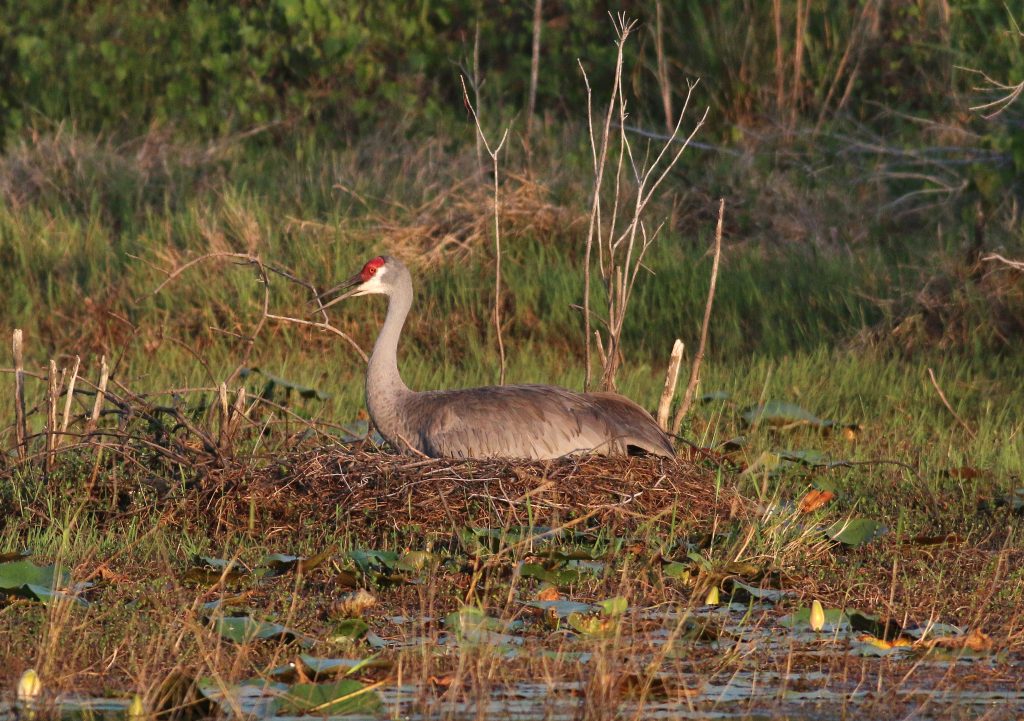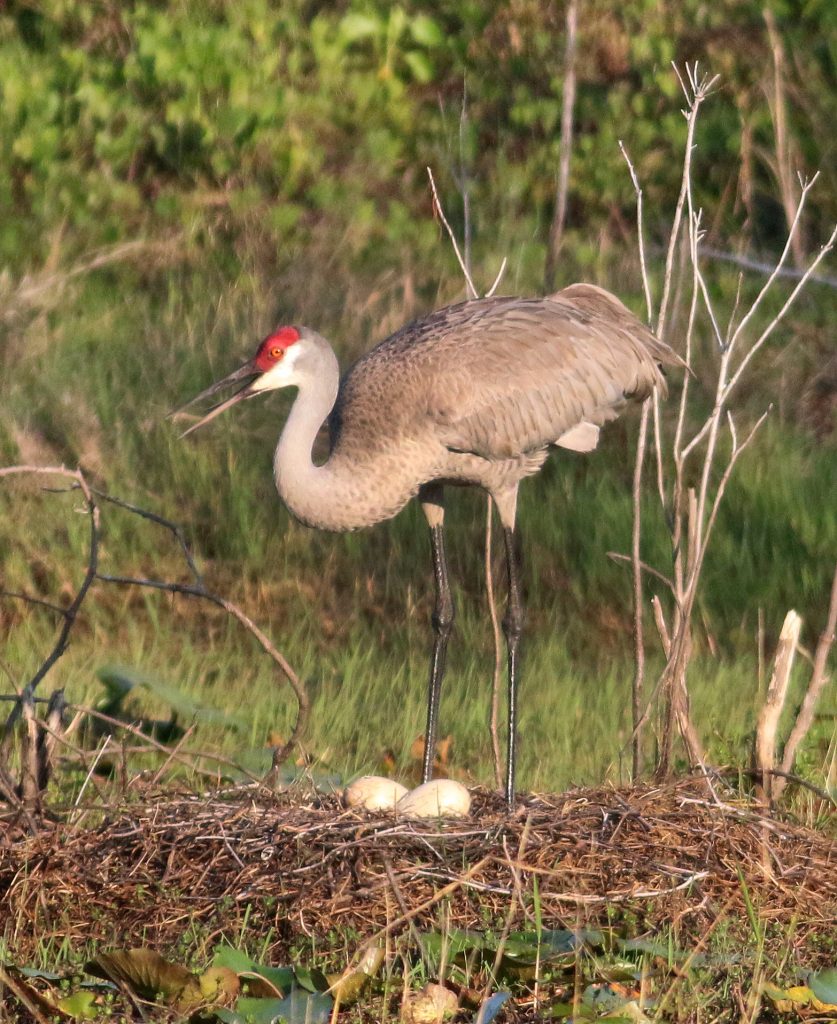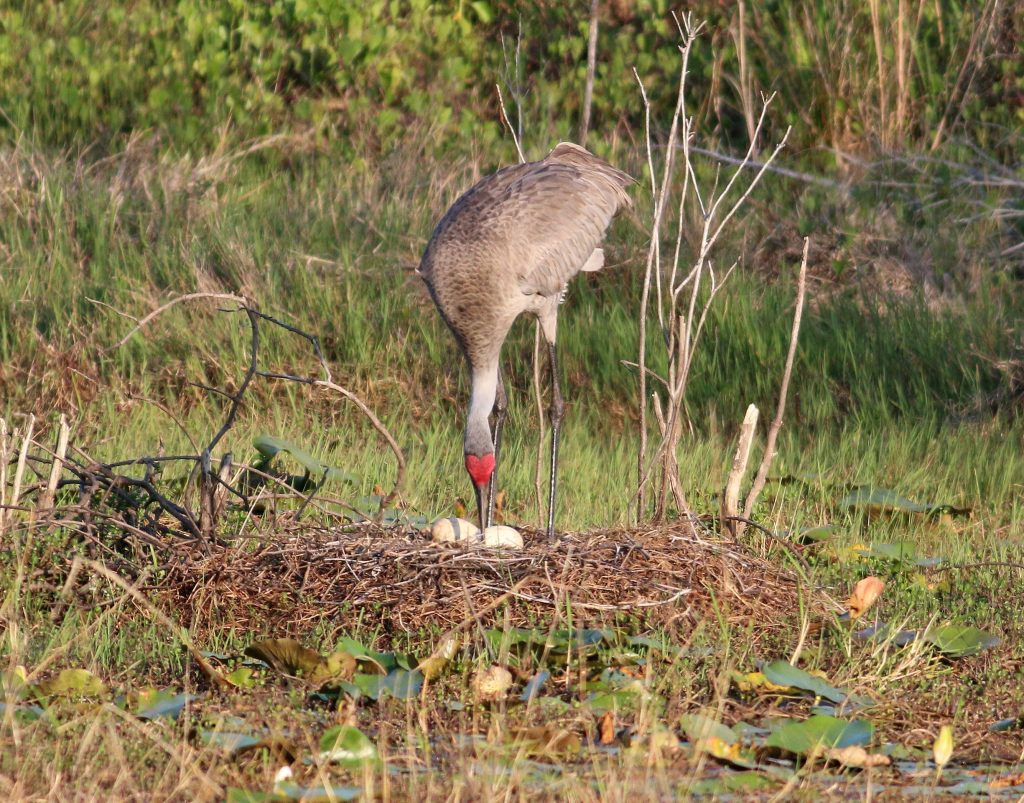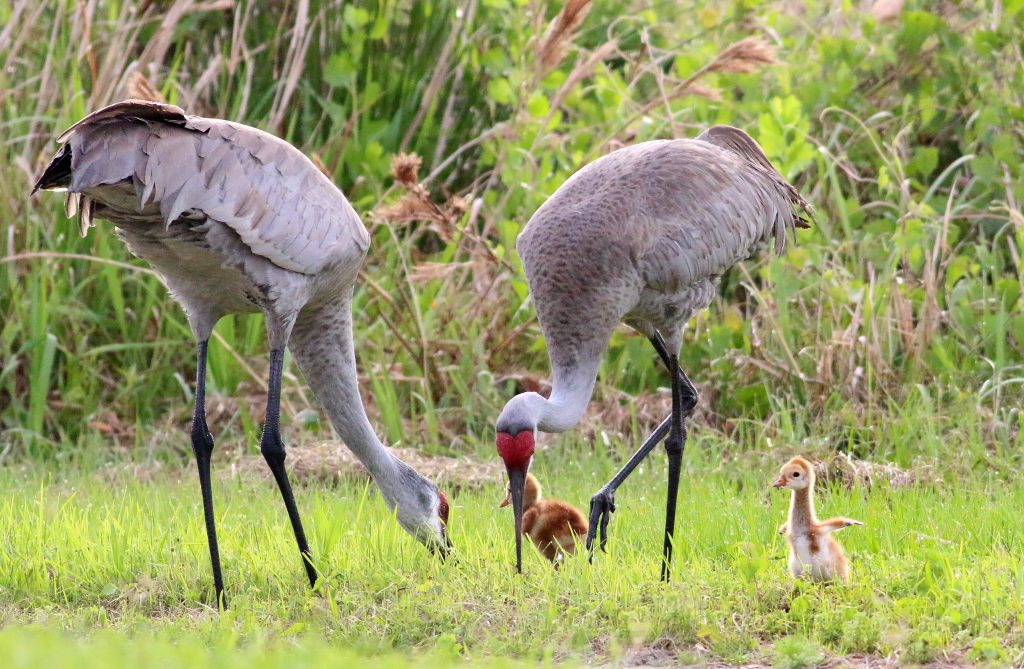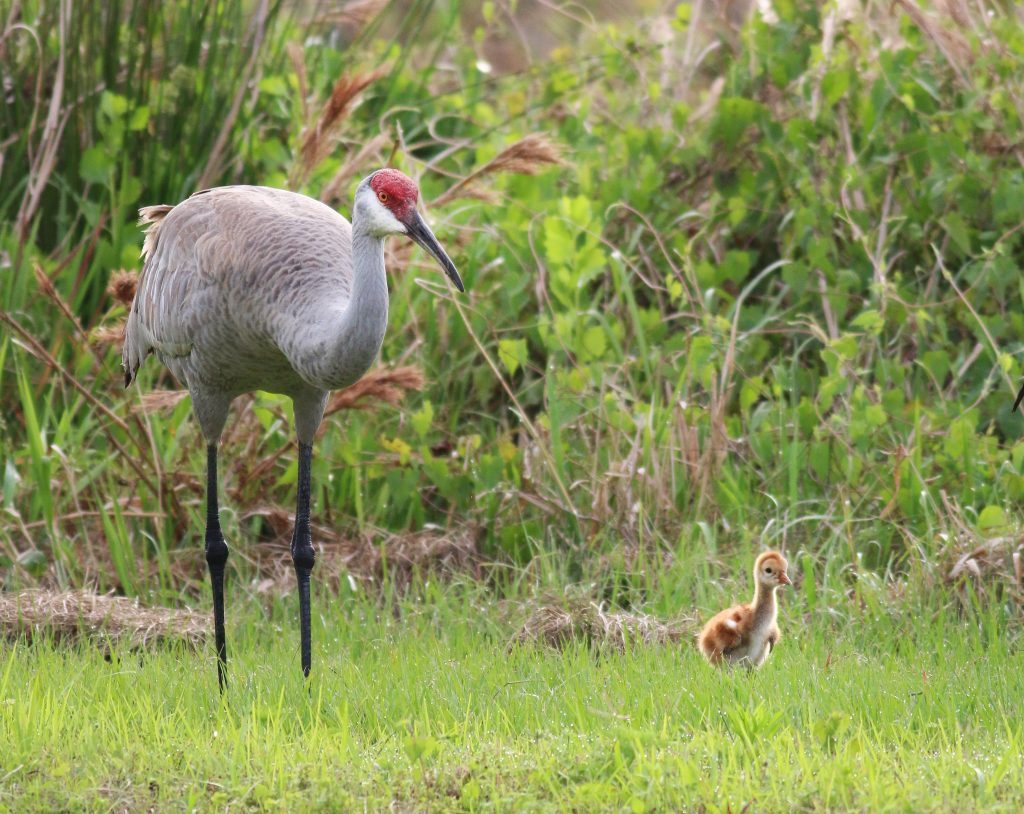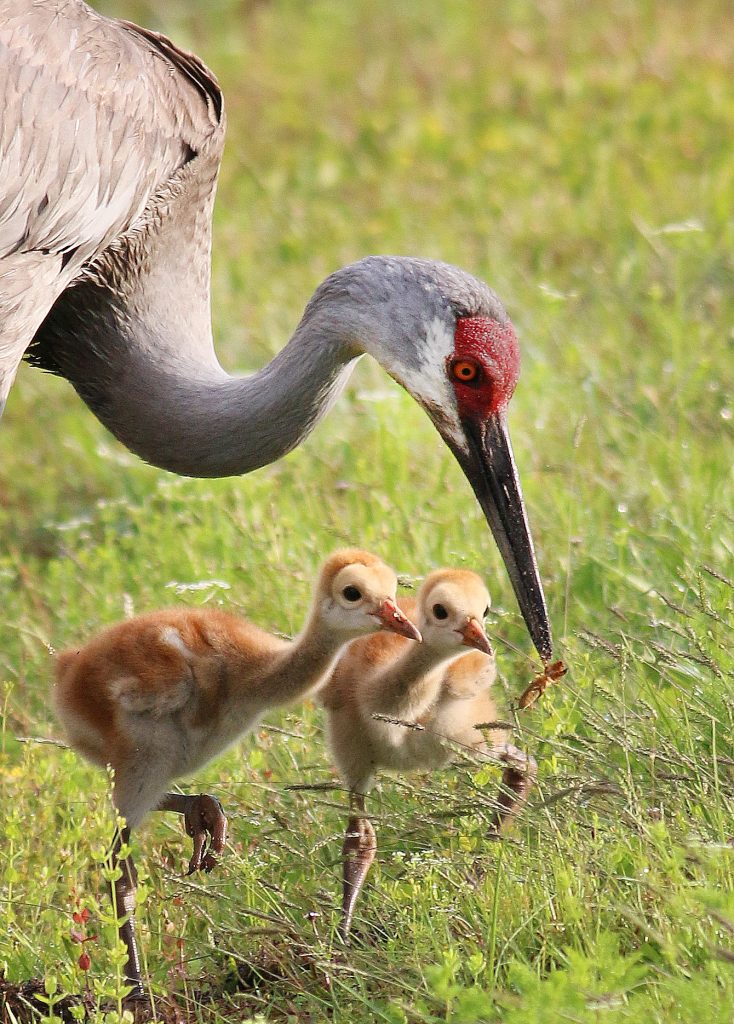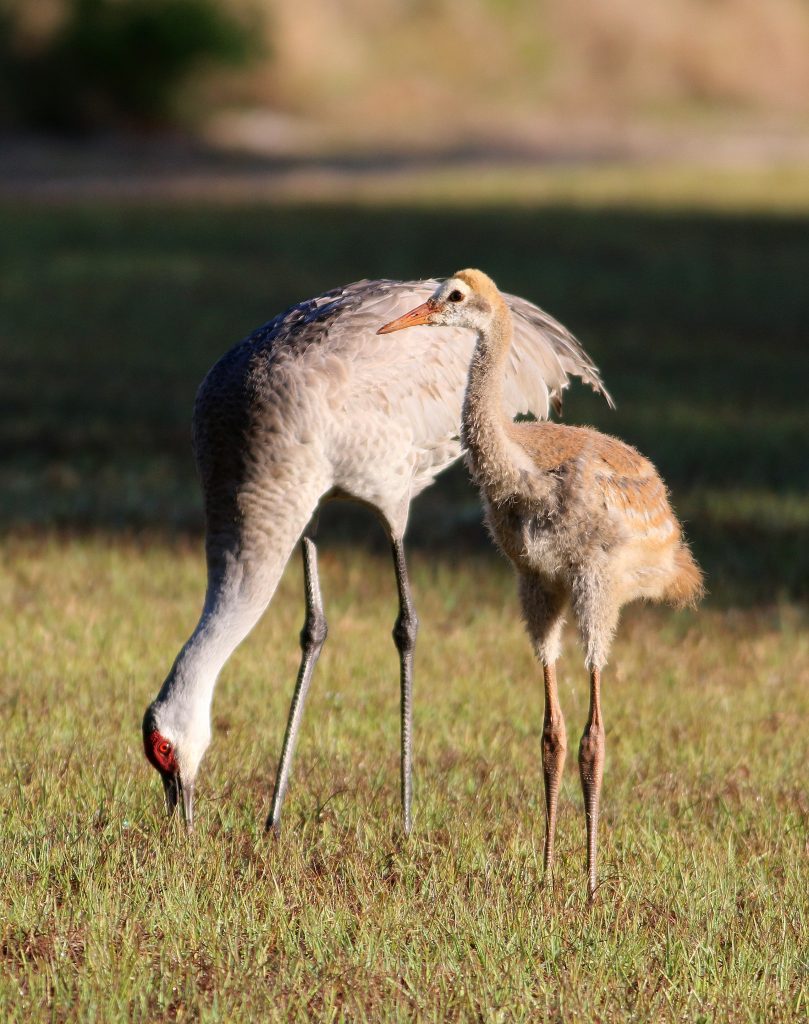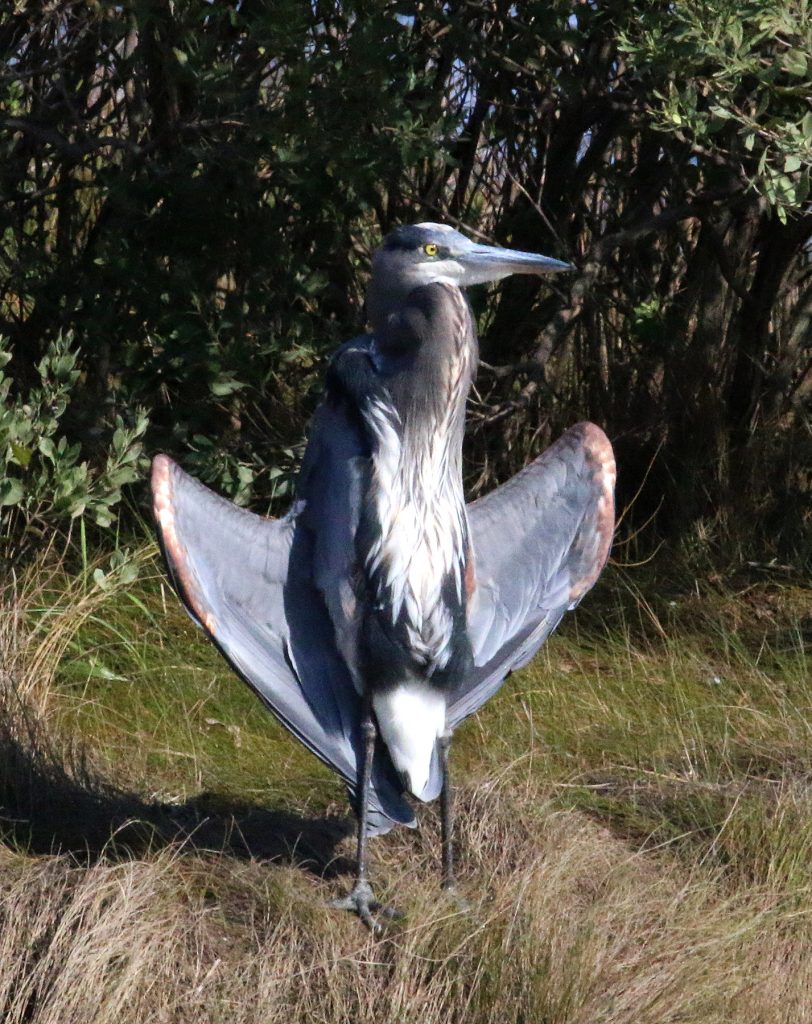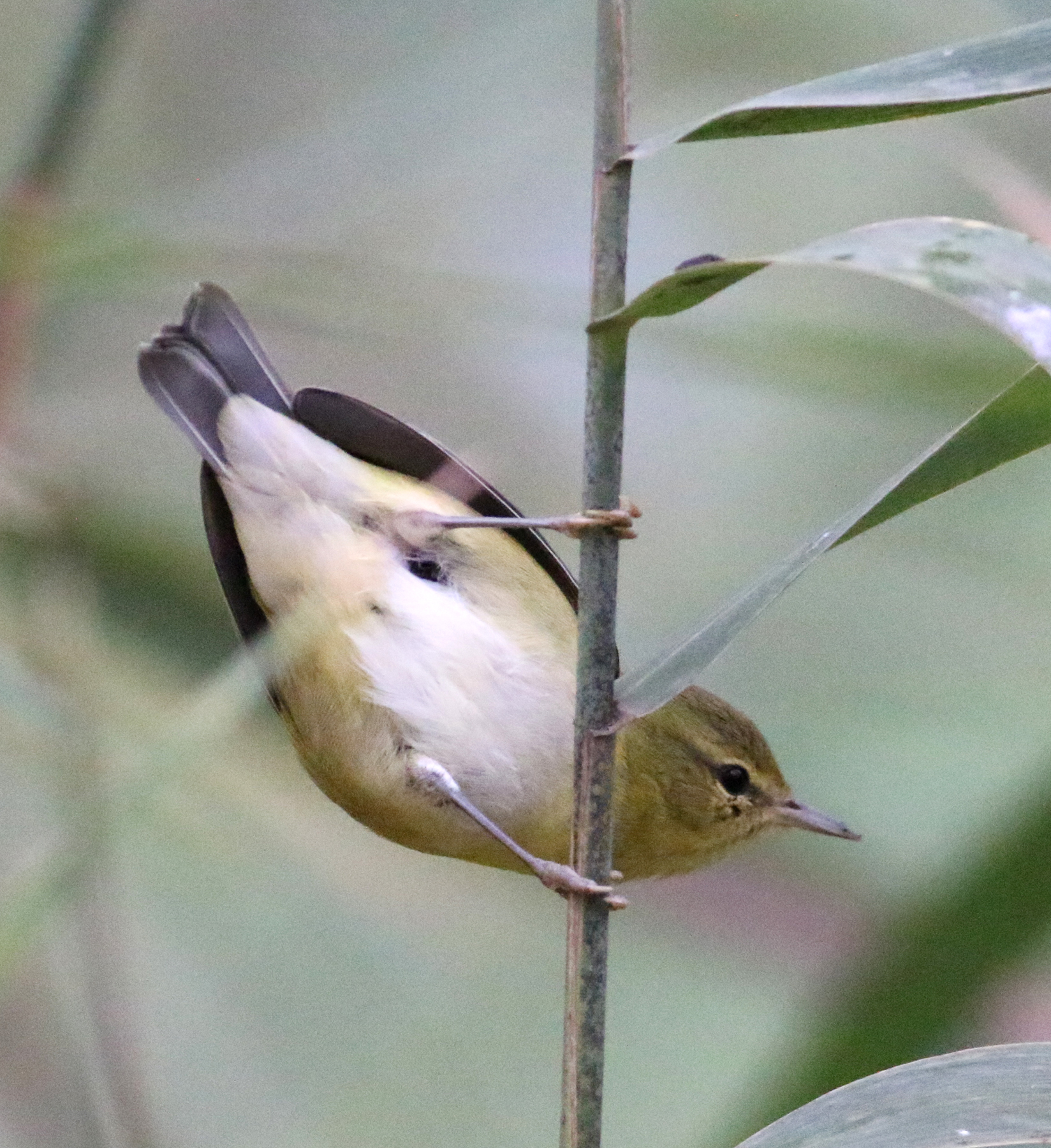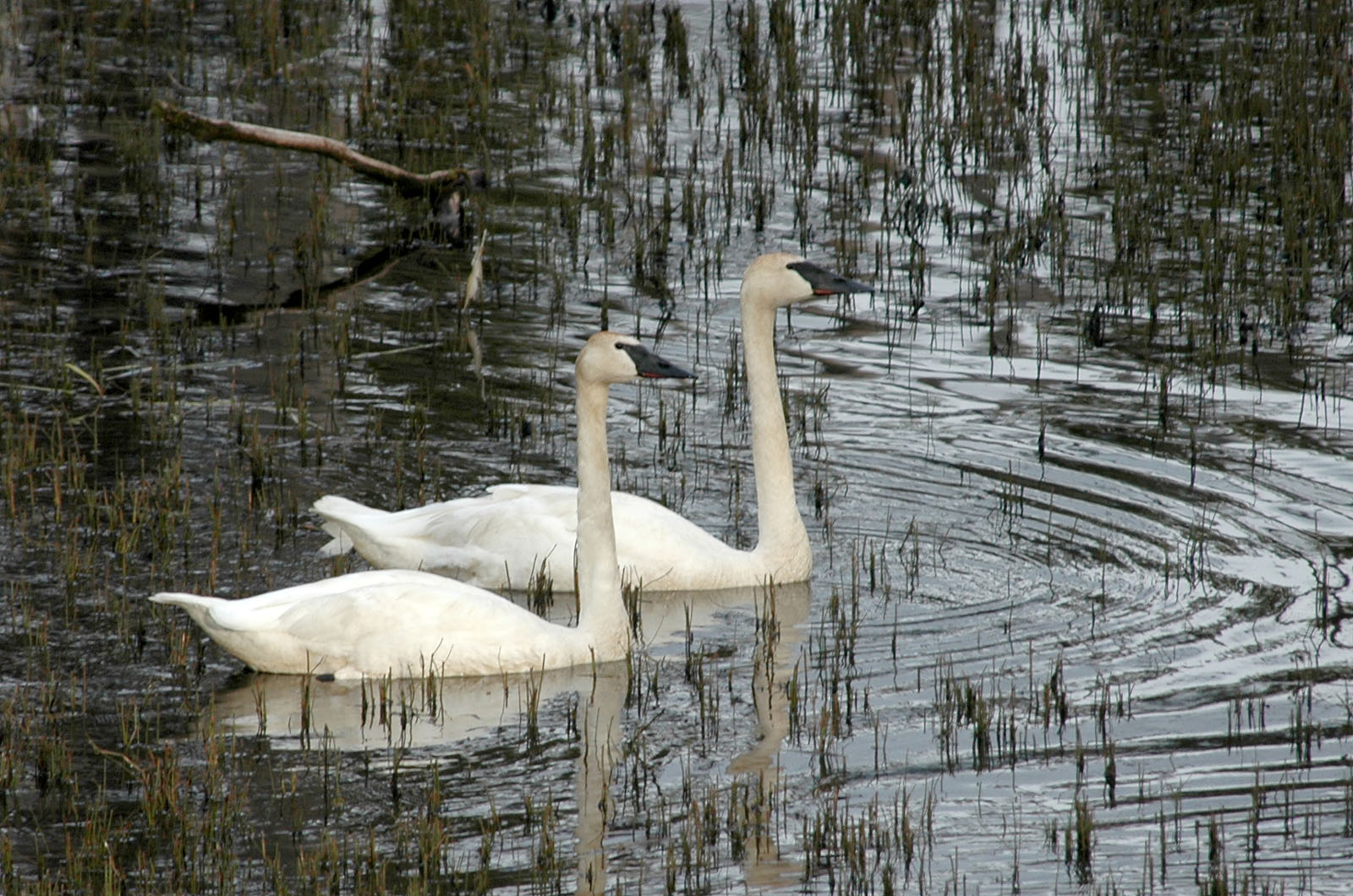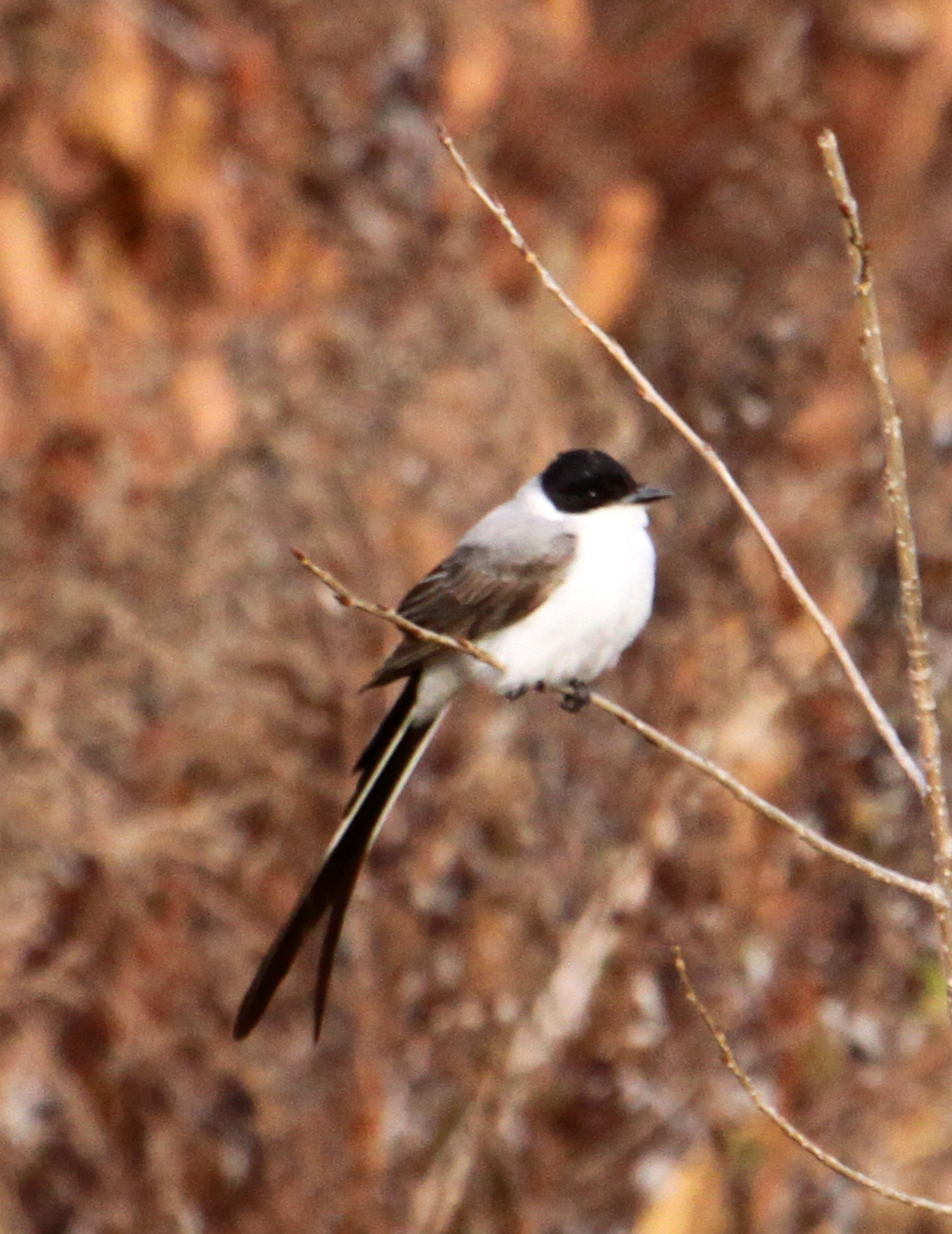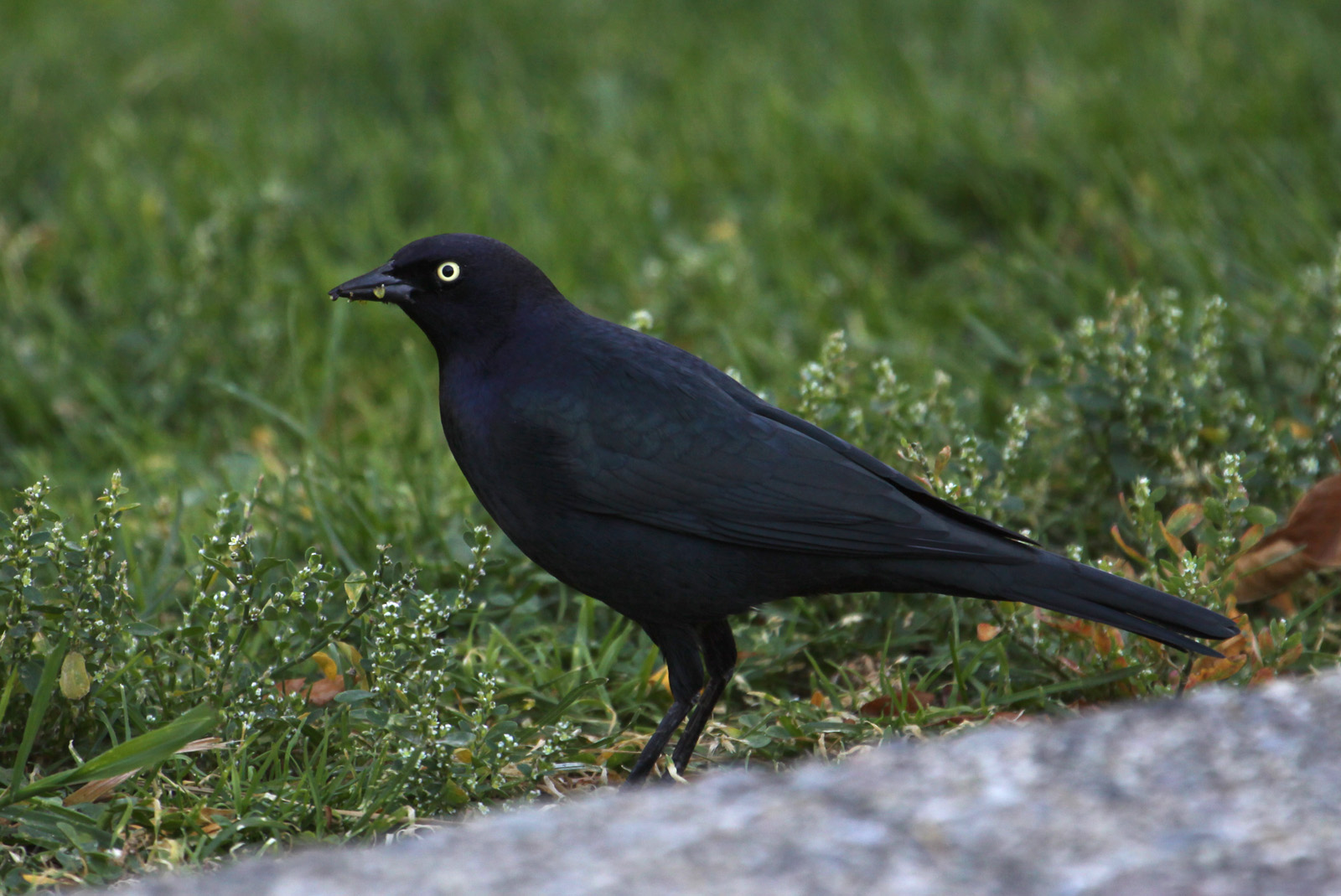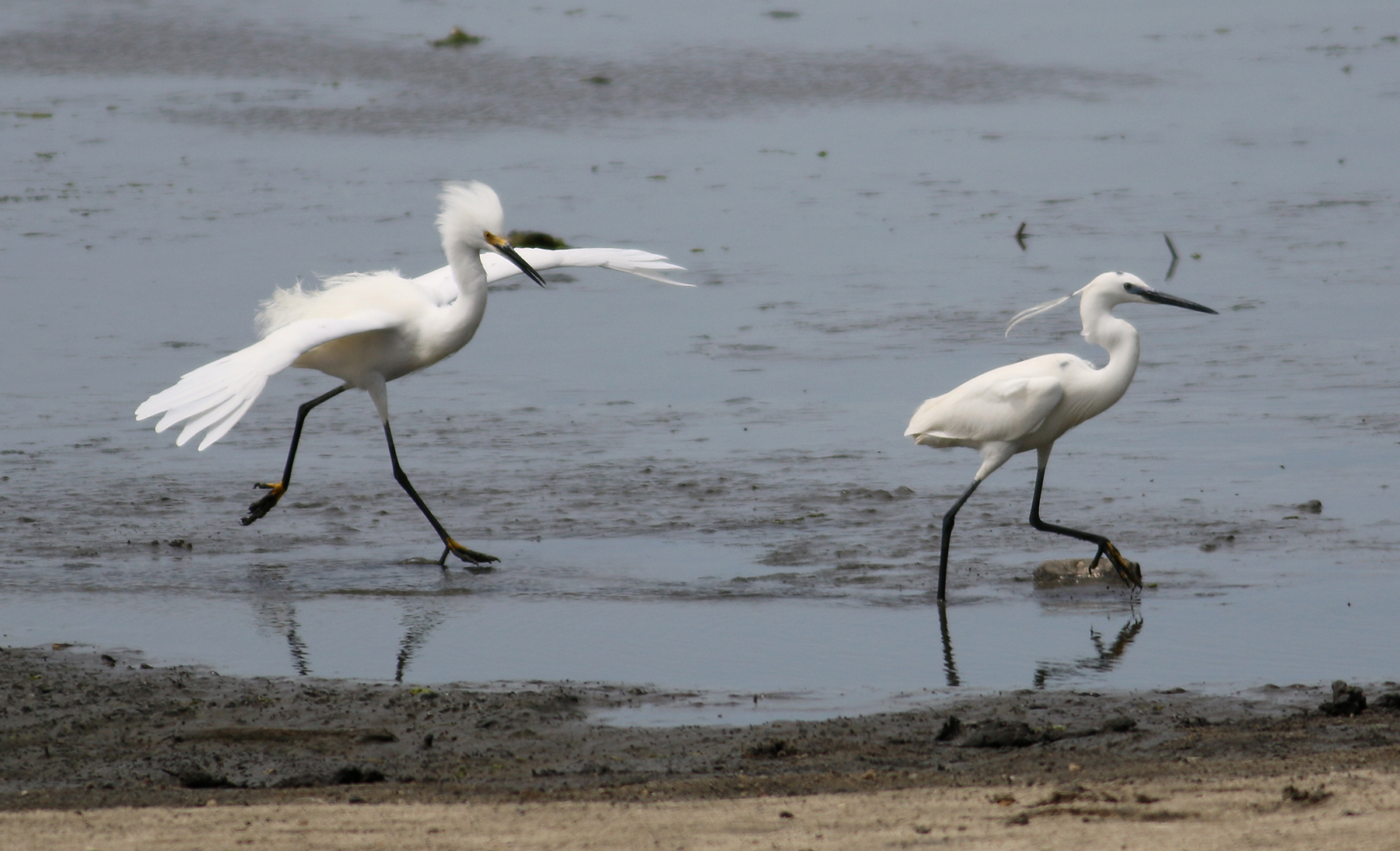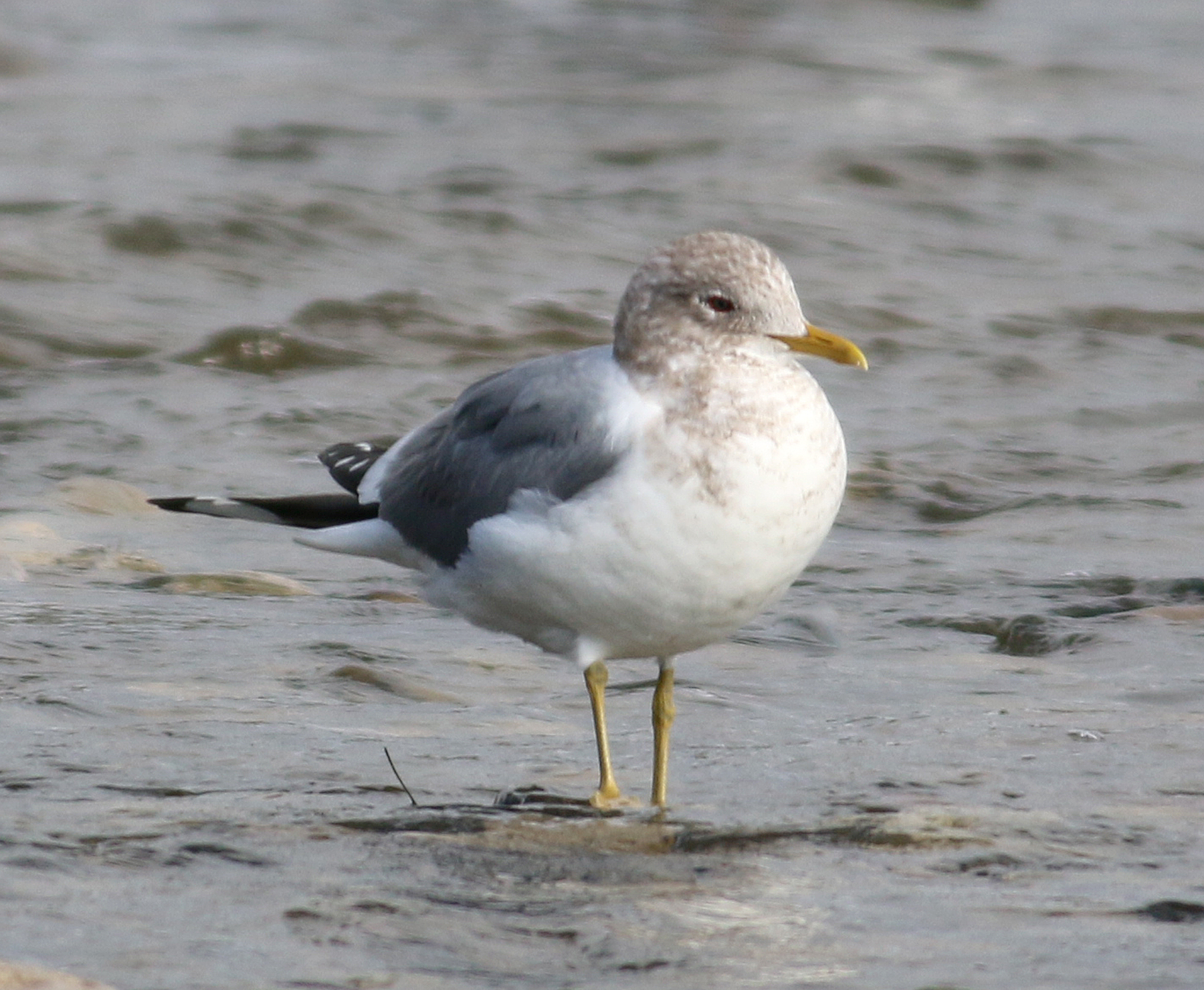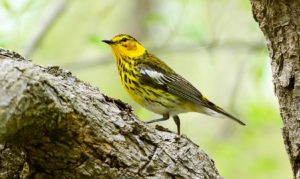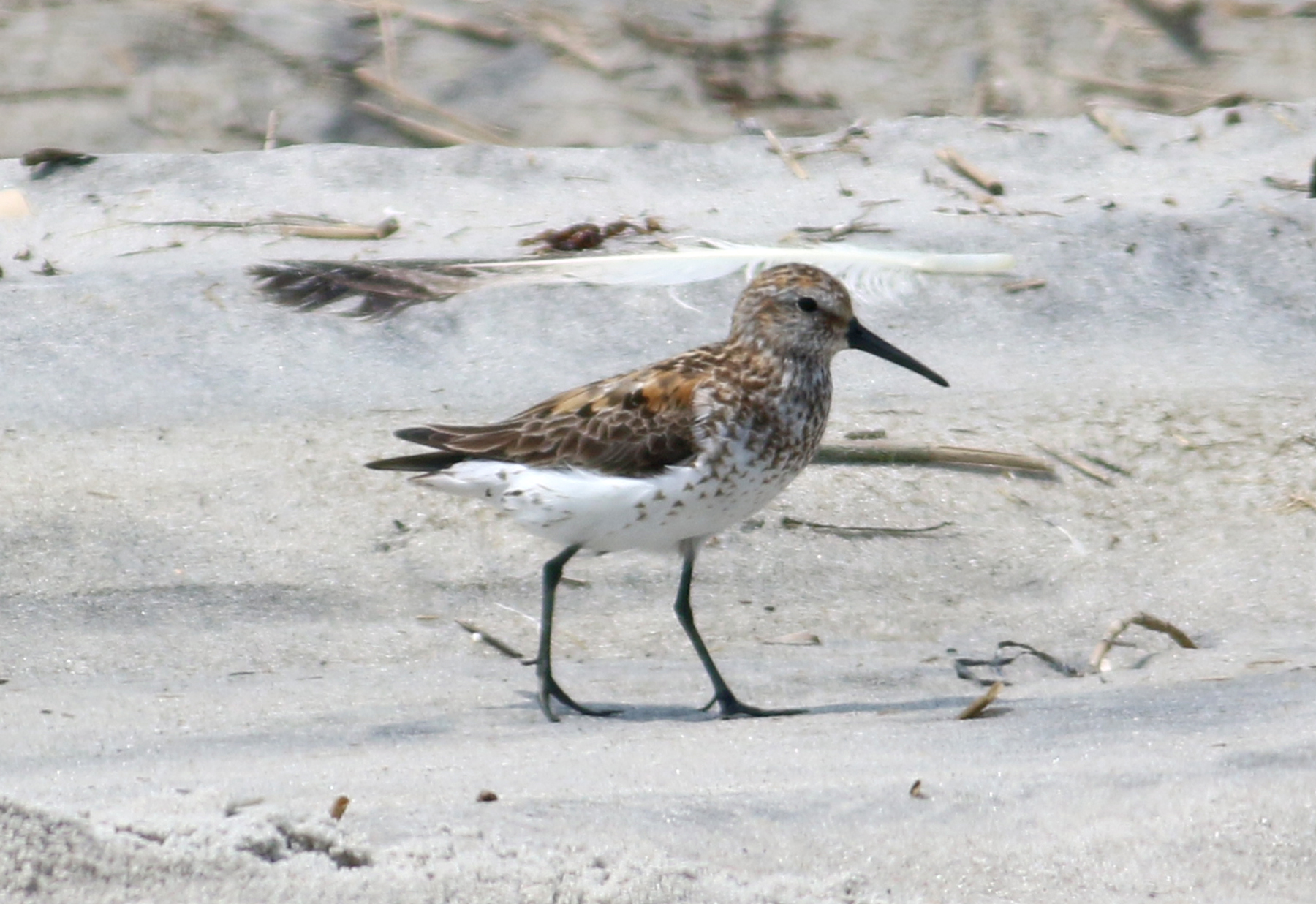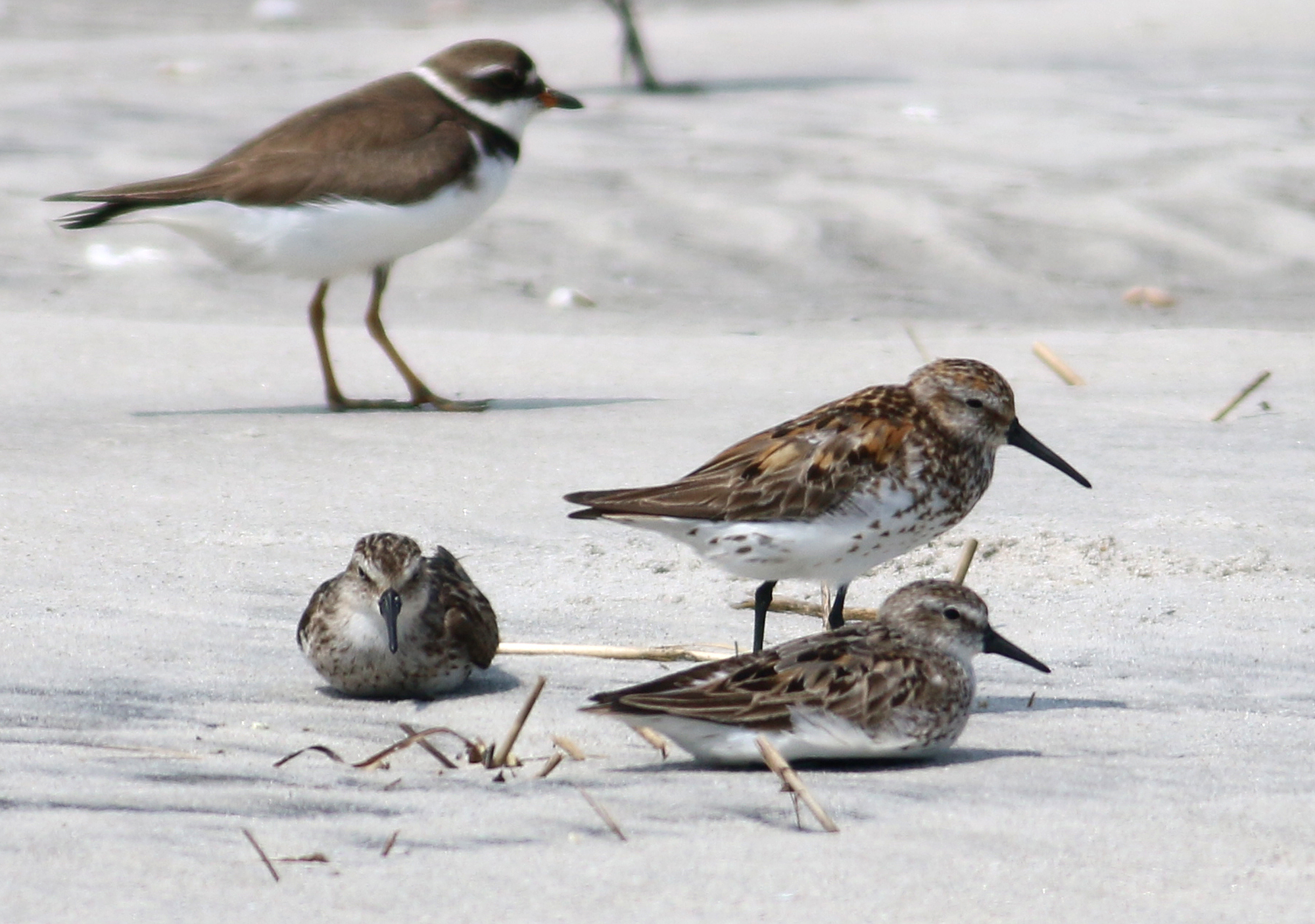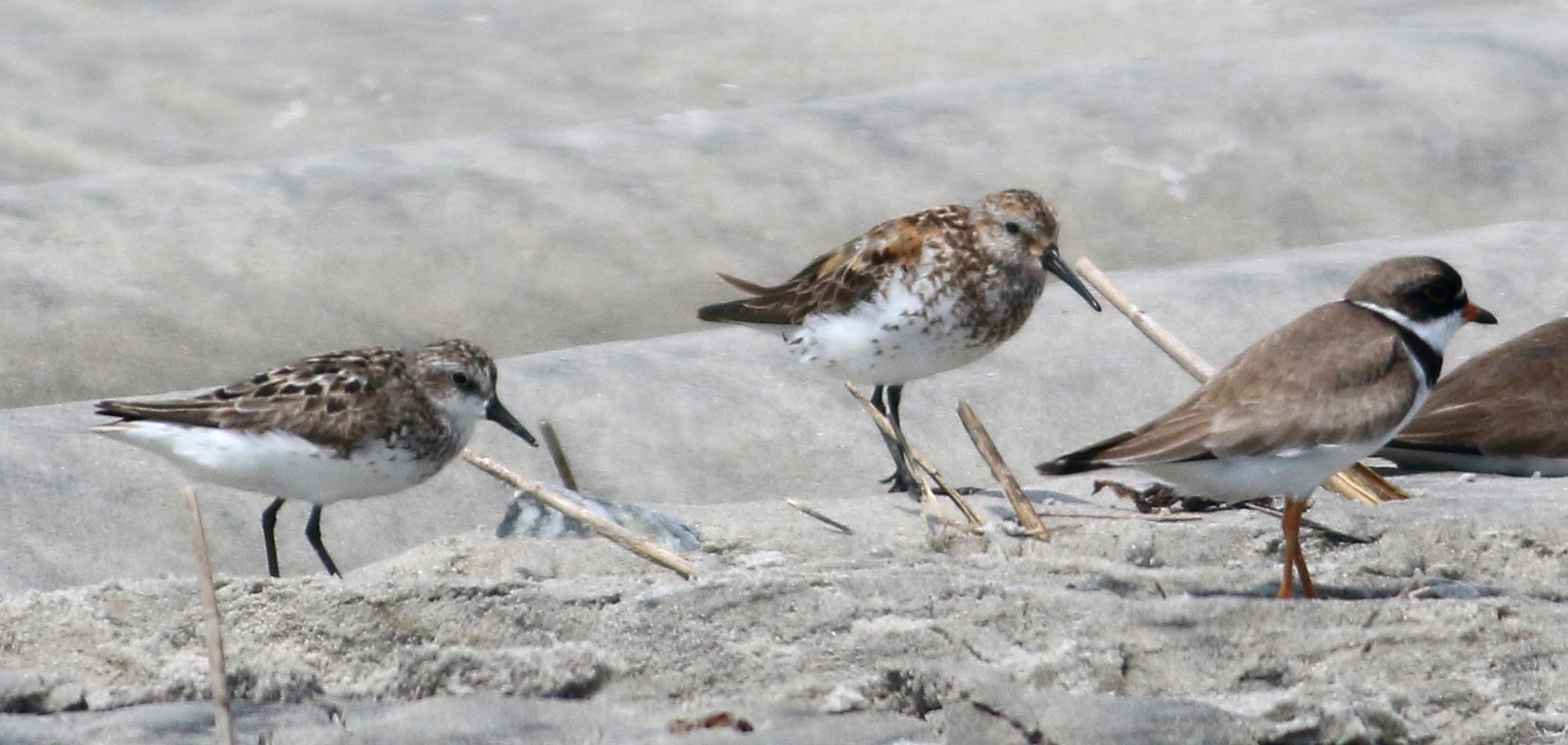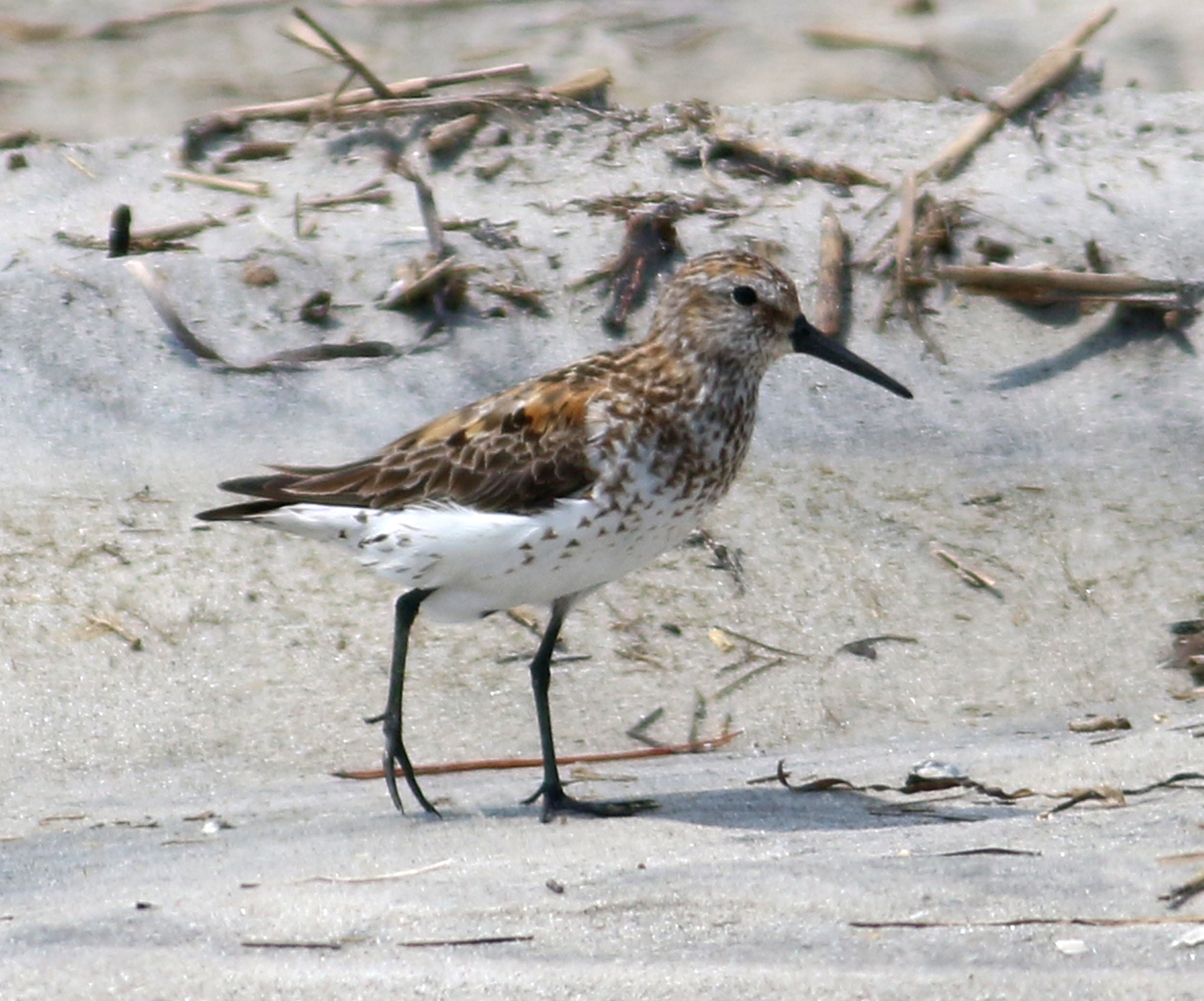I seem to be on a Roseate Tern fixation lately. We have been searching successfully for them in spring for the past three years, I posted recently about how they seem to be increasing in NJ over the past decade or so, and now Jeanine and I just found our first fall Roseate that I think merits some discussion.
If you want a brief recent description of their local history, you can click here, but suffice it to say that sightings of Roseates are increasing over the past few years, but locally they occur more often in spring than in late summer / fall. This might be partly due to the fact that they are easier to identify in spring, when they tend to stand out among other medium-sized terns due to their black bills (when Forster’s Tern and Common Terns usually have orange bills), long tail, and overall pale plumage. In fall the bills of Common Terns and Forster’s Terns also turn black, and it can be tough to find a tern with a thinner black bill among all the other medium-sized black-billed terns.
But while scanning through a flock of Common Terns this week in the Sedge Islands, one bird stood out as having light plumage. It did have what appeared to be a longer narrower bill, but was it real, or was it just birder’s imagination trying to turn it into a rarer bird? It didn’t have a long tail, which argued against Roseate. As we approached closer, we did see that it was banded, having a yellow band with black lettering, but a few weeks ago we had an interesting and confusing Common Tern that was banded, and previous Roseates that we found all had blue bands with white lettering. Finally, we knew that Roseate fall sightings are rare here in Ocean County, with only two eBird reports ever from August, and none in September. Because we were in a canoe, we didn’t have our field guides with us, so we leaned toward it being a Roseate, took lots of photos (too many of which ended up being overexposed) and hoped that when we got home we could figure it out.
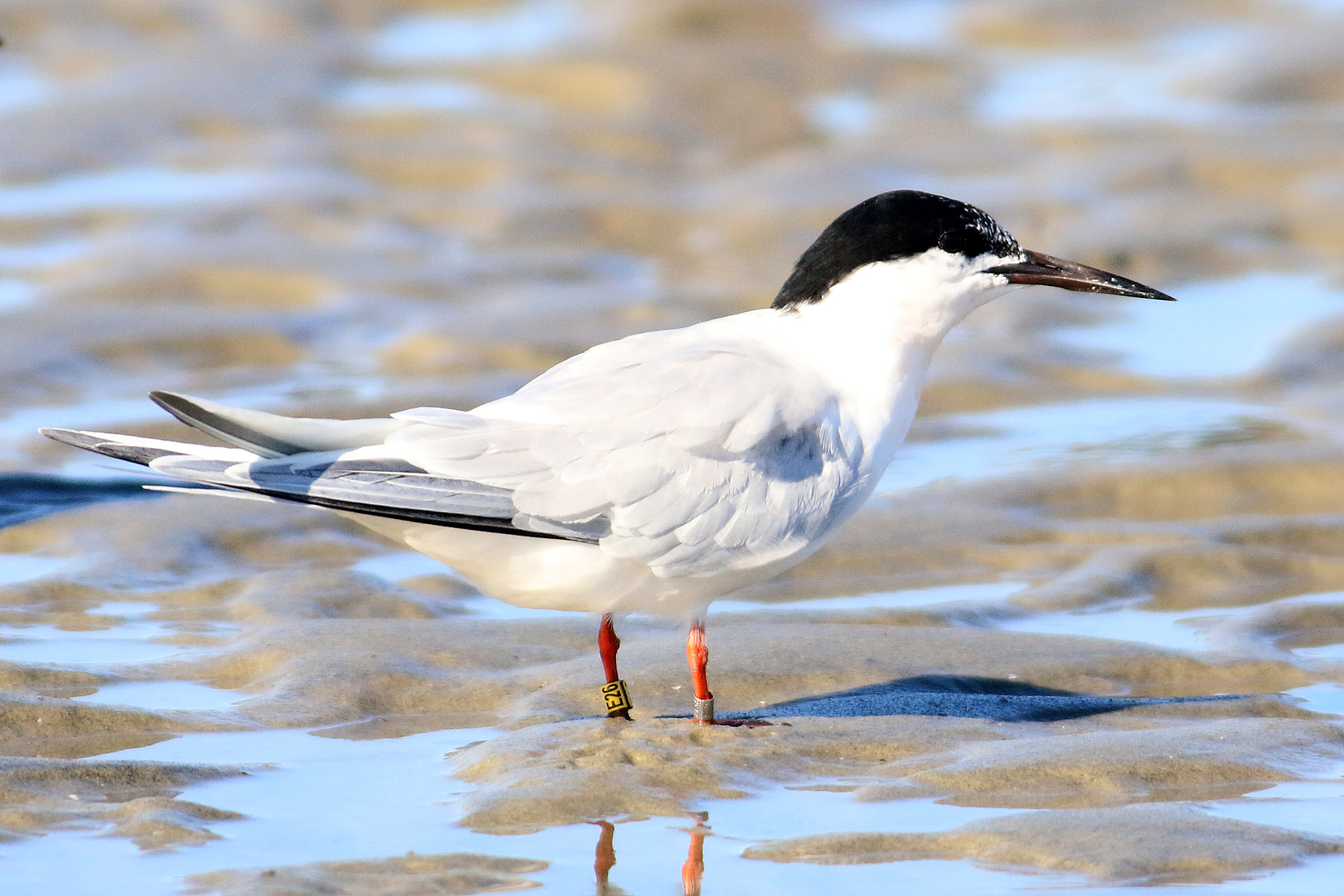
Here is the bird isolated, where it is tough to make comparisons. Overall it looks bright and with a longish thin bill. Note the black edges to the outer primaries, which will become relevant later.
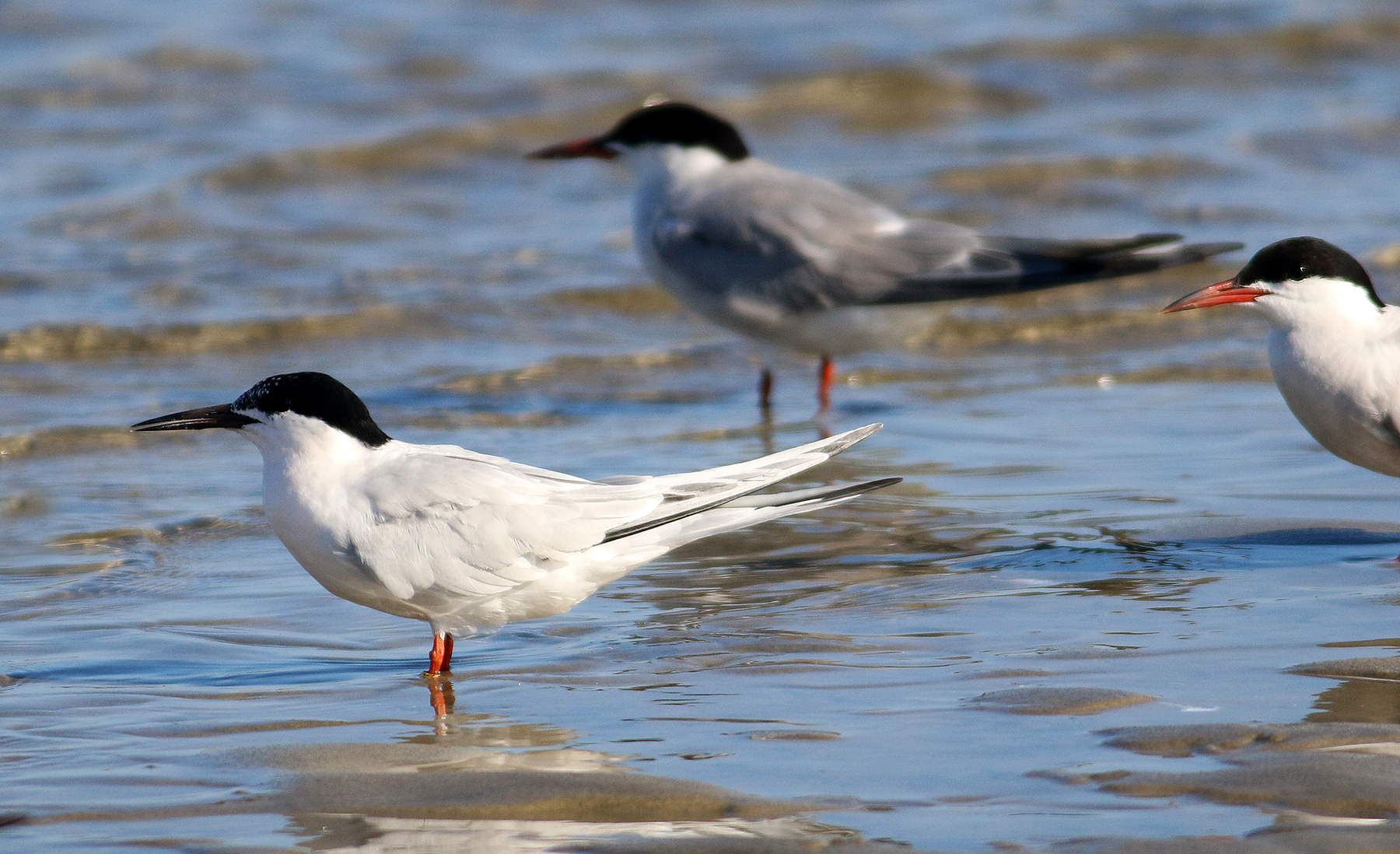
Now the bird looks even brighter when compared to a nearby Common Tern, and indeed the bill looks slightly thinner too. I find that brightness can change dramatically when a bird turns, but here they are facing the same direction.
Before we get to the thrilling conclusion, a few details about the distribution of Roseate Tern might be in store.
Roseate Terns can be found world-wide, nesting on offshore islands. The population here in the northeast US is endangered, with the two largest breeding colonies, each with ~2,000 pairs, located on Great Gull Island (NY) and near Buzzards Bay (MA). After breeding, they stage until late summer in Cape Cod before migrating southward. So this is the narrow fall window for spotting them on coastal beaches in our area.
Now back to our photos. We already saw how bright this bird appeared compared to the surrounding Common Terns. In some photos the bill indeed looks longer and narrower.
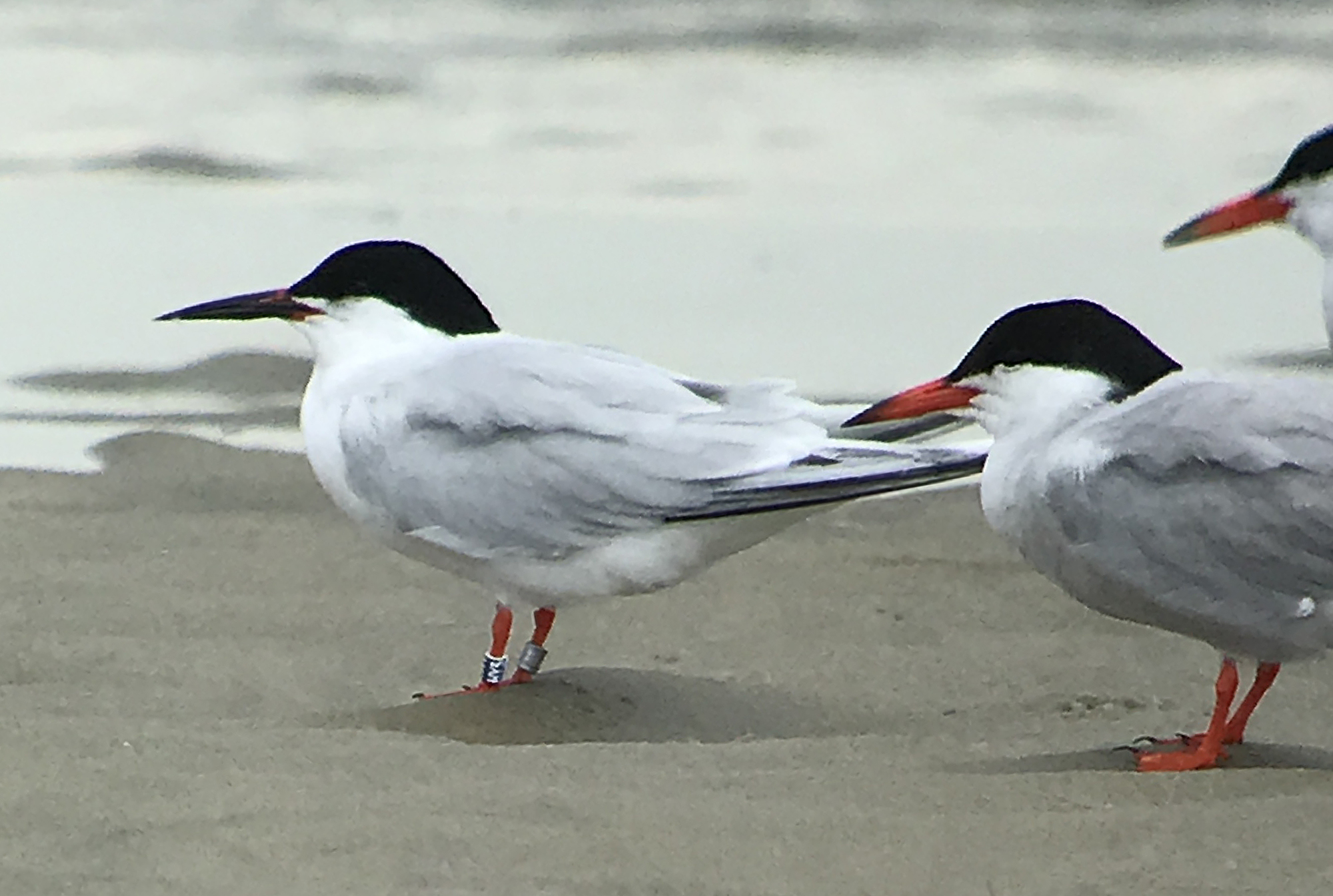
In this comparison the bill looks quite narrow again compared to the Common Tern.
In some photos where the bird is resting we see that the two outer primaries are black, which is good for Roseate. The best flight photo however, shows that six primaries are darkish gray in flight, seemingly arguing against Roseate. In support of Roseate, however, those six primaries are dark on the forward half of the feathers and light on the rear half.
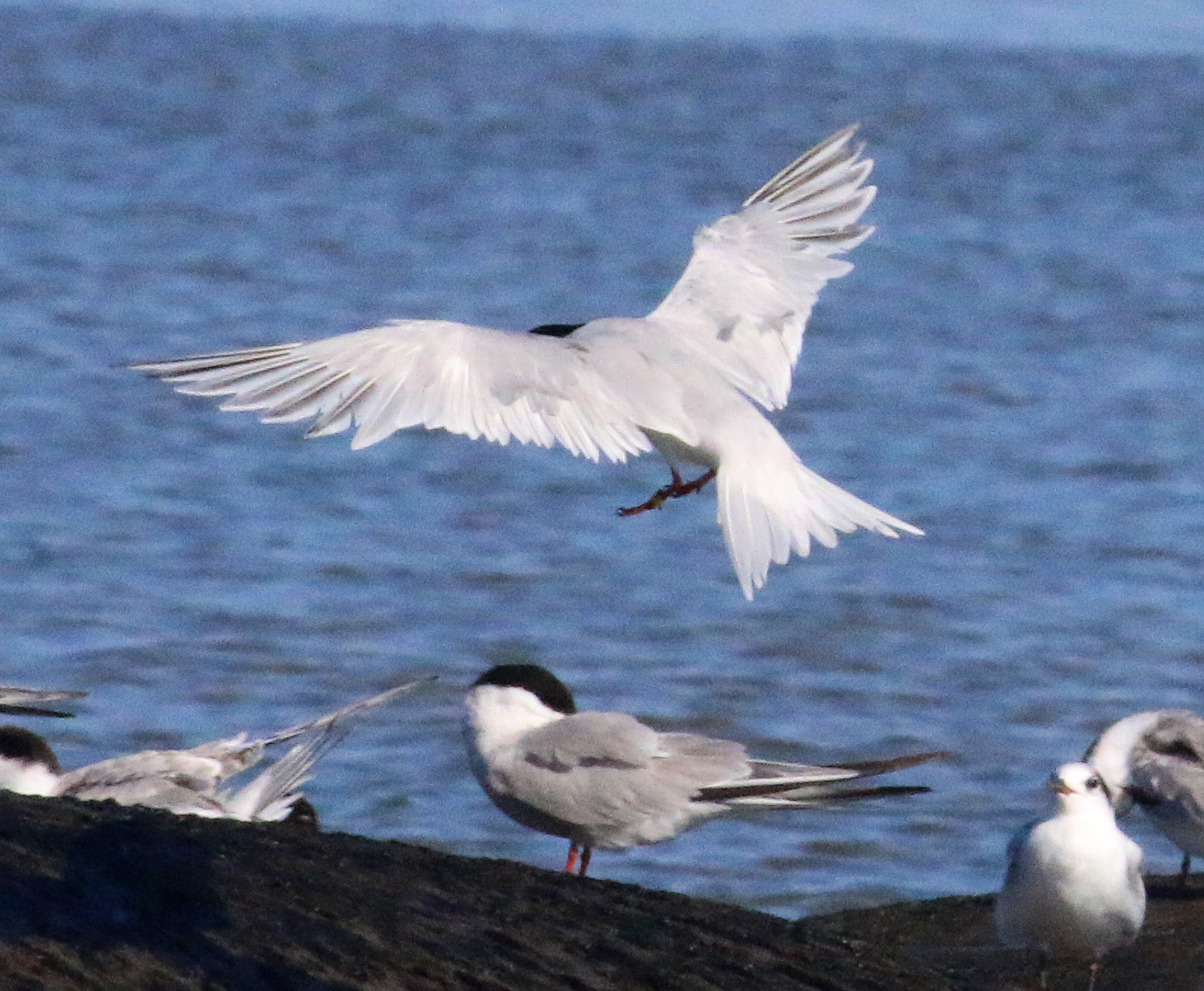
Finally we see the bird in flight. It lacks the long outer tail feathers, but I only count four feathers on each side of the tail, so presumably the longer feathers are molted or worn.
The tail completely lacked the long outer retrices, but upon closer examination, I see only four tail feathers, so presumably the outer feathers are molted away at this time of year.
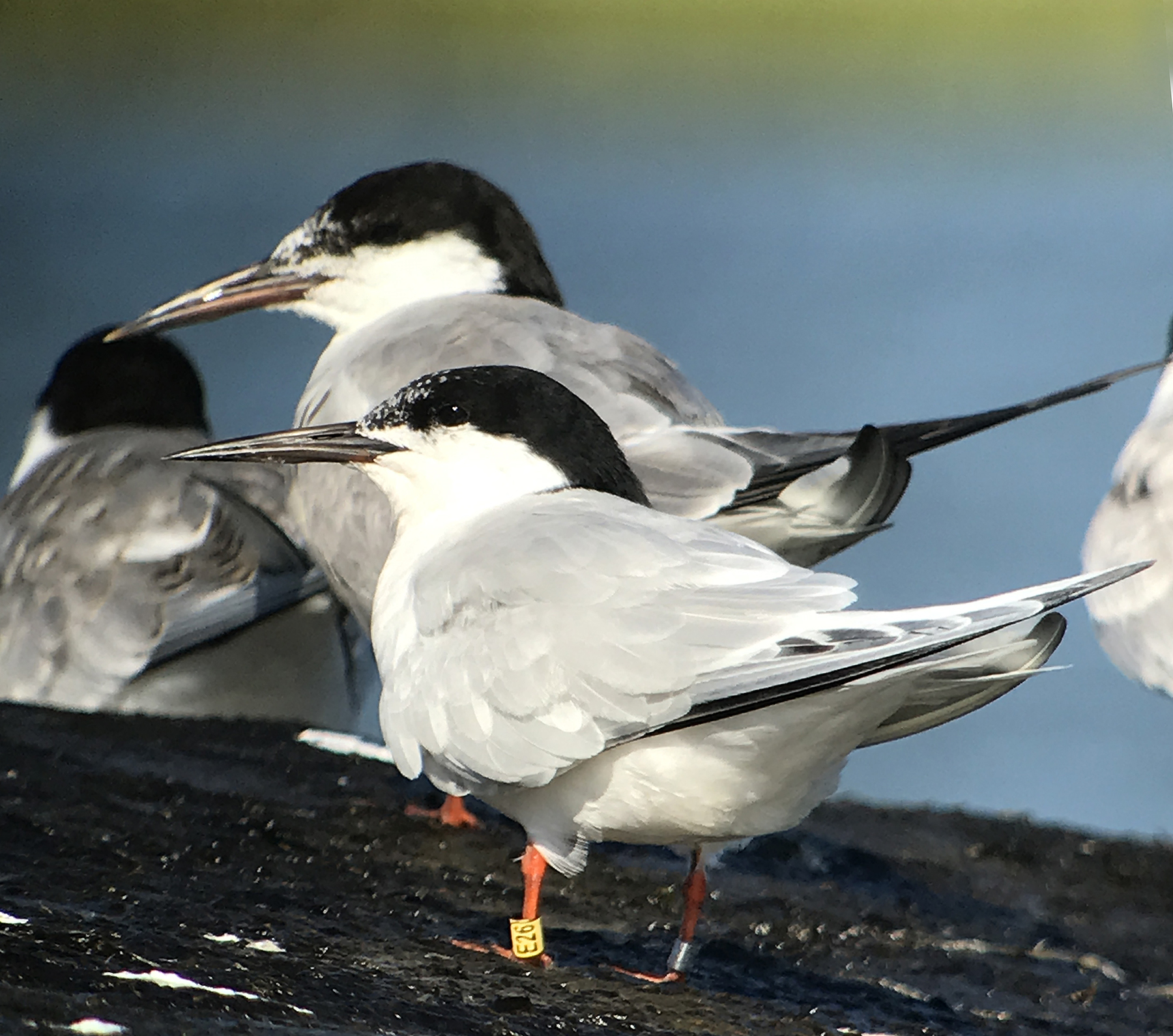
Here we get good documentation of the banding code, but the bill looks only slightly different from the Common Tern.
Overall, we were now convinced that we had our first fall Roseate, so we submitted a report to the bird banding lab, and within two days the report came back positive. Our Roseate Tern was banded in 2017 in CT, being too young at the time to fly. So this bird is two years old, and should be ready to breed next year.
It was a great lesson for us on the finer points of how to identify Roseate Tern in fall.

